While pet owners often find it second nature to show affection to their furrier friends, like dogs and cats, through a reassuring stroke on the back, they might be hesitant to extend the same gentle touch to other animals, especially caged creatures such as leopard geckos.
These intriguing reptiles, although delicate under our hands, feel quite differently about human contact compared to our typical pets. Unlike dogs or cats that might adore being petted, leopard geckos may not like it in the same way, but they do respond to positivity under the proper circumstances. With a gentle touch on their jaw or backhead, without causing undue stress, they can learn to appreciate and even enjoy the interaction.
It’s always important to approach them without fear and to understand their unique needs, ensuring that our affection doesn’t become a source of stress for them. In essence, while they may not seek out contact as eagerly as a cat or dog, leopard geckos can certainly learn to enjoy and even look forward to these moments of affection.
Table of Contents
How To Pet A Leopard Gecko
Petting a Leopard gecko can be a rewarding experience, as they absolutely like to be pets and it feels good on their skin. However, petting this lizard can be stressful for the creature if they’re unfamiliar with you. So, don’t try to pet your gecko if they are new to your family. It’s important to build trust and work your way up.
Gradually, as you go into handling them later, you’ll discover their favourite places to be petted, which are often the head, under the chin, and the base of the tail. But never pet further down the tail, as this could stress out the gecko and may cause them to drop their tails. Although they can grow back, they won’t be the same, and losing a body part is downright stressful for them.
When you pet a leopard gecko, use soft strokes and be gentle, always remembering that you are much larger and it’s easy to hurt them accidentally. If done correctly, you’ll know they’re enjoying being pet because they will close their eyes in contentment. This gentle approach ensures that your interactions are pleasant and stress-free for your pet, fostering a bond of trust and affection.
Related Post: ARE LEOPARD GECKOS GOOD PETS?
Where Do Leopard Geckos Like to Be Petted?
In the world of Leopard geckos, petting is a delicate art, one that requires understanding their preferences. These creatures generally allow petting, but it’s crucial to let them see your hands first, creating a sense of trust. A favourite spot to stroke is along their back and head, where a gentle, continuous motion can be soothing.
When approaching the jawline, it’s essential to trace the jaw lightly with the back of a finger. It’s an intimate gesture, and the gecko’s response often indicates their comfort level. Additionally, moving gently and continuously while petting helps maintain a calm and reassuring environment for these sensitive reptiles. The key is to be patient and attentive, ensuring that every touch reinforces a bond of trust and affection.
What’s the Best Way to Bond with a Leopard Gecko?

Crafting a strong relationship with a leopard gecko involves more than just positive reinforcement; it requires creating a stress-free area, both inside and outside the cage. This is crucial in getting them to respond positively and develop a sense of calm and familiarity with their new environment.
Science shows that the environment makes a difference, particularly concerning thermal and feeding enrichment. Various aspects like puzzle toys, live feeding, thermal gradients, and maintaining optimal humidity levels are impactful elements. These steps add engaging objects, familiar sights, and smells, creating a preferable climate that benefits these ground-dwelling lizards hailing from the arid regions of the Middle East.
By replicating their natural environment and offering various climbing, digging features, hiding areas, and hang-out spots, you can significantly reduce anxiety and aggression, thereby helping improve your gecko’s perception of you and your surroundings. Understanding their needs and replicating their natural habitat is key to forming a lasting bond.
The 7 Tips for Your Leopard Gecko
#1 Placing Your Hand In The Cage
When it comes to interacting with your gecko, it’s important to never try to touch or grab them right off the bat, as this can make them feel fearful and view their cage – their safe space – as threatened. Instead, begin by placing your hand in the terrarium for a few minutes each day without making any attempt to touch it.
This approach of taking the first step towards them in a non-invasive way shows that you are not a threat and have no intention to attack. It’s a crucial part of gaining their trust, and rushing this process can make it more difficult to build a comfortable relationship with your gecko. Remember, patience is key in establishing a bond with these sensitive creatures.
#2 Let Them Approach You
The hard part of bonding with a new animal like a leopard gecko is not getting too excited and trying to take things too fast. Being patient and not trying to rush the process is essential; otherwise, you might set back the progress you’ve made and lose the trust you’ve gained. It may take a few days or even several weeks for your gecko to approach you.
They might start to lick or smell you as their way of learning your scent and taste, which tells them more about who you are. During these interactions, it’s crucial to keep still to avoid spooking them. Over time, they will begin to associate the sound of your voice and your presence together, making them more likely to come to you when you’re near their cage.
This slow and steady approach is key to building a trusting and comfortable relationship with your leopard gecko.
Related Post: WHY DO LEOPARD GECKOS LICK THEIR LIPS
#3 Let Your Leopard Gecko Acclimate
When introducing a leopard gecko to its new home, it’s vital to give it time to get used to the new environment. This adjustment period is crucial to prevent the gecko from looking at its caregiver as a threat. The transition to a new home can be nerve-wracking for these sensitive creatures, so it’s recommended to give them at least 2–4 weeks to settle before attempting any handling.
This waiting period allows the gecko to acclimate comfortably and ensures that it views its new surroundings and its human companions in a positive light, setting the stage for a trusting and enjoyable relationship.
#4 Place Them In A Small Area
Although your gecko may have allowed you to hold them, they are likely still very afraid, and the best practice is to gently pick up and place down your gecko multiple times in a controlled environment. Place them inside a small box during these sessions, as they won’t want to be placed just anywhere.
Being picked up can be a scary experience for them, and they might bolt as soon as they feel you let go. If they were placed on a floor, table, or bed, there’s a risk you might lose them, or worse yet, they could injure themselves. Ensure that the area is secure and they can’t escape.
Continue practising this handling method until your gecko starts to become comfortable with the process. It’s important not to overdo it, as too much handling can lead to your gecko becoming overly stressed. A few times a day is enough to help them acclimatize to being handled while minimizing stress.
This careful approach ensures a positive experience for both you and your leopard gecko, fostering trust and comfort in your interactions.
#5 Keep Your Leopard Gecko Separate from Pets
Leopard geckos, being solitary creatures, thrive best in environments where they have ample space. This is ideal, particularly when not pairing them with a mate for breeding purposes. It means keeping them separate from other animals, especially those outside their enclosure.
Common household pets like cats and dogs, despite their friendly nature, can pose potential threats to these delicate reptiles. Their presence often proves stressful for leopard geckos, turning the bonding process into a challenge. Hence, it’s crucial to maintain a secure and peaceful environment for your gecko, ensuring they are not overwhelmed by the more dominant household pets.
#6 Talk in a Soothing Voice
When it comes to making a leopard gecko comfortable, the sound of your voice plays a pivotal role. As these creatures naturally become familiar with the look and smell of their owners, the voice becomes an important aspect of their identity. When you enter the room, talk in a calm, gentle, and consistent tone, particularly during feeding times.
This practice helps encourage your gecko to come and greet you, aiding in their de-stressing and providing a grounding experience. Associating a unique word or sound with food can create a positive association and further relax your gecko. Over time, this consistent and soothing communication fosters a deeper bond between you and your leopard gecko, making them more receptive to your presence and touch.
#7 Pick Them Up Properly
When it comes to handling a leopard gecko, the first step is allowing them to explore your hand before attempting to pick it up. Lay your hand motionless in the tank, giving them the opportunity to touch, smell, and decide whether to climb or ignore it. In the first few weeks, this process of letting them check out your hand without forcing it is crucial.
Only put your hand in for food and water, and give them the chance to become comfortable with your presence. Once they seem ready, you can lift them by sliding your fingers under their midsection. It’s important to never grab their tail, as they might detach it if threatened. Work slowly and carefully, ensuring you have a gentle grip on the pet.
To properly pick up a leopard gecko, make sure they are balanced and sturdy in your hand. As you lift, use your other hand to cup underneath and support them. Be prepared for them to move around or even move forward quickly; stay ready to swoop in and catch them if needed.
This careful and considerate approach helps create a safe and comfortable experience for both you and your leopard gecko, fostering trust and ease in your interactions.
#8 Handle at the Proper Time
Understanding the behaviour of Leopard geckos is key to interacting with them, especially since they are crepuscular and most active in hot, dry habitats during the early morning and evening to beat the harshest heat. It’s advisable not to handle them when they might be sleeping or enjoying their alone time in the middle of the day, even if it seems more convenient for you.
Tip: The best time to shoot for handling is after 6 pm when they are more likely to be cooperative. Establishing a reliable routine, like spending a few minutes daily with your gecko, enhances bonding, with the exception being during their shedding period when they are easily agitated and might feel discomfort from petting. This consideration of their natural rhythms and preferences not only respects their needs but also fosters a deeper and more harmonious connection between you and your pet gecko.
#9 Create Positive Associations
While Leopard geckos may not fall in love with you in the conventional sense or view you as their protector or companion, they can certainly figure out that your presence is a plus in their lives. One of the best ways to succeed in this is by using food as part of your strategy. Adhering to a proper feeding schedule is essential, but occasionally offering treats during handling can significantly make the experience more enjoyable for your gecko.
This method helps them associate your presence with positive experiences, increasing the likelihood they’ll want to repeat these interactions later. Creating such positive associations is key in forming a bond with your leopard gecko, ensuring that each encounter with you is something they look forward to.
#10 Watch for Signs of Stress
When it comes to handling and petting your leopard gecko, it’s essential to create a comforting environment and approach their care with sensitivity. Always keep a close eye on signs of stress, as these reptiles communicate their uneasiness and anxiety in several ways, including making a fuss.
If you notice any signs of discomfort, it’s best to put them back in their enclosure and give them space. Never force your attention or interactions on them, as this could make them warier of you in the future. Understanding and respecting their boundaries is key to building a trusting relationship with your gecko.
Also Read: WHY IS MY LEOPARD GECKO NOT POOPING
#11 Do They Like Me?
It’s harder to tell if a gecko likes being around you compared to more expressive pets like a dog or cat. Researchers aren’t sure if lizards can feel emotions like happiness, but they do exhibit signs of contentment. You can know if your gecko is happy and comfortable with you if it willingly allows you to pick up and hold it.
This behaviour shows that they don’t see you as a threat and are at ease in your presence. Understanding and interpreting the subtle cues of a leopard gecko can be challenging, but their willingness to interact and their calm demeanour around you are good indicators of their comfort and trust.
Do Leopard Geckos Like When You Pet Them?
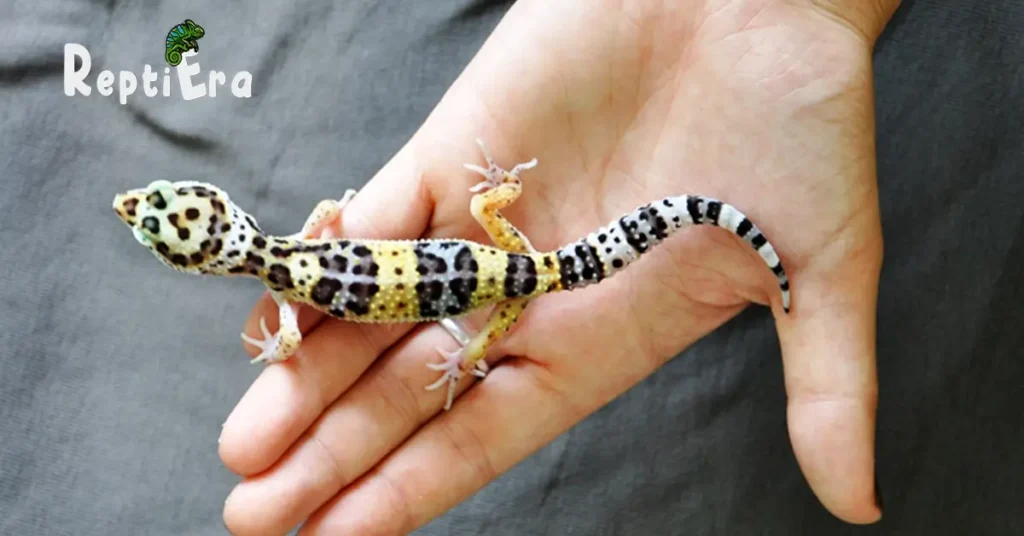
Contrary to popular pets like cats and dogs, Leopard geckos don’t inherently enjoy petting. One can’t simply dive into handling them soon after they become a part of your family. It’s essential to first establish a trusting bond; otherwise, your touch might cause stress, resulting in negative associations that work against your efforts. In a way, you almost have to train your gecko to allow petting.
This process involves creating a strong connection, using positive reinforcement alongside a gentle touch. Over time, with patience and understanding, your leopard gecko may get to tolerate and possibly even enjoy the affection, turning a once stressful interaction into a moment of bonding.
Do Leopard Geckos Like To Be Held?
Holding a Leopard gecko is similar to petting them in that it requires patience and understanding. Generally, Leopard geckos do like to be held, but it’s important to give them a chance to get to know you first.
Never rush these delicate creatures into handling; they need time to feel comfortable with their human companions. It’s crucial not to try to grab them, especially if they appear clearly afraid. This patient approach allows the gecko to build trust gradually, ensuring that they feel safe and secure in your hands. By respecting their space and moving at their pace, you create a positive and reassuring experience for both you and your gecko.
How To Hold A Leopard Gecko
To successfully hold and pet a leopard gecko, it’s crucial to start slow and be patient, especially if you’re hoping to gain the trust of these delicate creatures. The process involves several steps, each designed to gain your lizard’s trust gradually.
First, allow the gecko to become familiar with your presence and your touch in a non-threatening way. This slow and steady approach not only builds trust but also ensures that the gecko is comfortable and feels secure with you. By respecting their pace and being mindful of their comfort, you create a bond that is both rewarding and enriching for you and your leopard gecko.
How to Have Fun With Your Leopard Gecko
Beloved for their spotty scales and sweet personalities, leopard geckos are among the best companions for those who love reptiles. When you’ve set up their cage and everything is in place, you might be thinking, “Alright, how can we have fun together?” There are tons of easy ways to bond with your gecko.
From simply walking them through their new habitat to exploring interactive activities below, there’s a lot you can do to enrich your shared time. Let’s get started on this journey of creating a joyful and engaging environment for your spotty friend. Remember, the key to a fulfilling relationship with your leopard gecko is understanding their unique needs and personalities, and from there, the possibilities for fun and bonding are endless.
Also Read: DO LEOPARD GECKOS CLIMB
Playing with your Gecko
- Gecko-proof your playing area.
When you begin playing with Leopard geckos, particularly the young ones who are fast and might run away given the chance, it’s crucial to create a safe space where they cannot escape. Consider using a box or bin, or choose an area in your home where you can set up barriers. These can be made of pillows or soft things to block access to the rest of the house.
Ensure these barriers won’t easily tip over and hurt the gecko. It’s a good thing to keep doors and windows closed to prevent drafts, which are not good for geckos, and to stop other pets you may own from interfering. Once your gecko has gotten used to being taken out of its cage, it should calm down a bit. Then, you can safely handle it in more open areas like a bed, couch, floor, etc., while continuing to ensure its safety and comfort.
- Let your gecko explore.
Geckos are generally curious and active creatures that like to explore, so it’s important to let them take the reins during playtime. Allow your gecko to crawl on your arms, ride on your shoulders, or even curl up in your hair. Be prepared for them to settle somewhere they find warmth on your body; remember, they are cold-blooded and your skin feels like a sunbaked stone to them.
Don’t be surprised if your gecko decides to hang out around your neck or in the crook of your arm. Another way to encourage exploration is to ball up a piece of fabric, like a shirt or towel, and place it on the bed. Let your gecko crawl around the towel and find its own favourite cave or hiding space.
Make sure to keep an eye on them to know where they’ve hidden themselves when it’s time to put them back in their tank. In an empty room, they might enjoy climbing, although they aren’t very good at it, and finding places to crawl into, like behind and around cushions and pillows. Just be cautious and never leave them unattended to avoid the risk of losing them.
- Create an obstacle course for your gecko.
To engage and stimulate your Leopard gecko, get a bin or a large box and place various ‘obstacles’ inside it. These can include paper towel tubes for your gecko to crawl through, smaller boxes to crawl over, and other items that encourage exploration and movement.
Be creative in your selection; you can add climbing trees that can be bought at pet stores, or repurpose old toys to give the obstacle course a unique look. Leopard geckos generally love climbing on things, so creating an environment that challenges their natural climbing instincts not only provides them with physical activity but also mental stimulation, making their habitat more engaging and enjoyable.
- Set up a gecko carnival
Setting up a gecko carnival is similar to creating an obstacle course, but with a key difference: you’re not trying to get your gecko to get from one side to the other. Instead, you’ll fill a box with various gecko toys, such as climbing trees, patches of carpet, and paper towel rolls, and then just let them play.
You’ll be amazed at the funny things they do; some geckos love climbing up and jumping off again, while others enjoy rolling around in their playful setup. This gecko carnival is a great way to learn what your gecko likes to do, providing them with both mental and physical stimulation and giving you insights into their preferences and behaviours. It’s a fun and interactive way to enrich their environment and deepen your bond with them.
Also Read: CAN LEOPARD GECKOS EAT VEGGIES
- Watch a movie with your gecko.
While it’s not necessarily considered ‘playing’, spending quality time with your gecko can be as simple as watching a movie together. This activity is a great way to bond as it allows your gecko to get comfortable, possibly sitting in its favourite warm spot on your body.
Settle in with your little companion and enjoy a film; you might notice, as some leopard gecko owners have, that they may stare at the screen or even fall asleep in their cosy, warm spot. However, make sure the sound is not too loud, as loud noises can startle and stress your gecko. This calm, shared experience can be a soothing and enjoyable way for both of you to relax and strengthen your bond.
- Know when to put your gecko back in its tank.
For geckos, maintaining their warmth is essential to keep their energy levels up, especially after activities like climbing or running around in an area that is not as warm as their tank. They can become fatigued quickly, so a good rule of thumb is to check your Leo’s belly after playing for about 10 minutes. If it feels cold to the touch, it’s time to place them back in their tank to warm up.
This careful monitoring ensures that your gecko stays comfortable and healthy, preventing overexertion and stress from cooler environments outside their habitat. Remember, the well-being of your gecko always comes first, and knowing when to end playtime is crucial for their health and happiness.
FAQs
Do leopard geckos like to climb on things?
Yes, terrestrial geckos like leopard geckos do enjoy climbing, contrary to what a lot of people think. They’re quite adventurous and will climb on anything they can. Just be sure that whatever they’re climbing is secure and doesn’t fall over while they’re exploring.
What kinds of things can I put in my gecko’s tank for it to hide in?
For hiding spots in your gecko’s tank, you can use anything – from wall grounds to boxes, and even flowerpots. Providing a variety of stuff for them to hide in and switching it up often makes their environment better and more stimulating. The key is to give them options and keep their habitat interesting and secure.
Do geckos like to be touched once they get used to you?
Yes, they do; leopard geckos are among the few types of reptiles that like to be handled once they’re accustomed to you. It’s important to make sure to give them time to adjust before you handle them, as they can get stressed out. When you bring them out of the terrarium, limit it to 10 – 20 minutes at a time, as they may get cold; you can check this by feeling their belly.
Do leopard geckos like to be touched?
Keep in mind that while leopard geckos don’t particularly like being held, they can get used to it. If you handle your Leo when they’re young, they probably won’t mind you holding them, but they won’t love it either. It’s about acclimatizing them gently and respecting their individual preferences.
Do leopard geckos like to get pets?
Leopard geckos are generally docile and tolerant of handling, but they can become stressed and uncomfortable if handled too much or inappropriately. If your gecko suddenly stops wanting to be held, it’s a sign that something is bothering them, indicating a need for a gentler approach or more space.
Are leopard geckos OK with being handled?
Leopard geckos generally prefer to live alone but can become used to being handled carefully. A healthy gecko should have clear, bright eyes, and a thick tail, and its belly should only touch the floor when resting, indicating comfort with handling if done gently and respectfully.
How do I know if my leopard gecko is happy?
Signs Your Gecko is Happy
- Enjoys exploring his enclosure.
- Moves around effortlessly.
- React when you touch him.
- Approach the front of his enclosure when you approach with food.
- Flicks his tongue around (to taste his environment)
- They enjoy relaxing in the warm spot of their enclosure.
Is it okay to touch a leopard gecko’s tail?
Leopard geckos generally prefer to live alone but can become used to being handled carefully. A healthy gecko should have clear, bright eyes, and a thick tail, and its belly should only touch the floor when resting, indicating comfort with handling if done gently and respectfully.
Conclusion
Leopard geckos often appear indifferent to the action of petting. Unlike some pets that actively attach meaning to human touch, geckos don’t inherently make such connections. However, more enjoyable and bonding experiences are possible with patience and attention. It’s about the time and effort you invest in creating a proper environment where your gecko can feel relaxed and well-fed. Over time, as they stay in your presence and grow accustomed to your presence, they eventually find comfort in your space.
This comfort with you can transform over time. At some point, a leopard gecko may eagerly anticipate interaction, showing signs of letting you pet them. This change is more about them getting used to your presence and the gentle, consistent interaction rather than a display of affection in the traditional sense. But remember, every gecko has its unique personality and comfort level with human interaction.


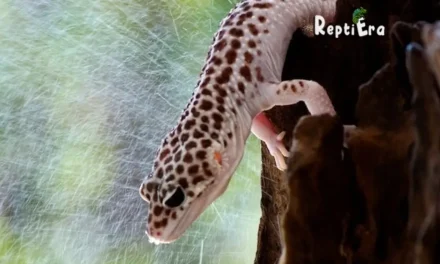
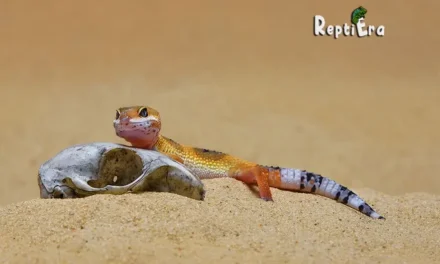
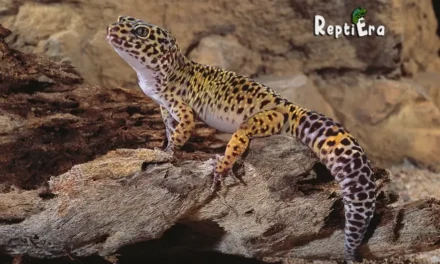
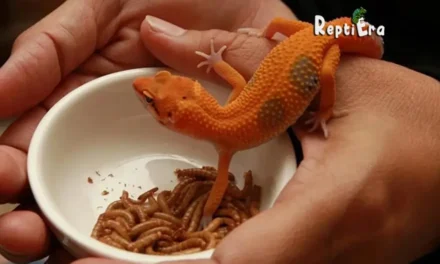
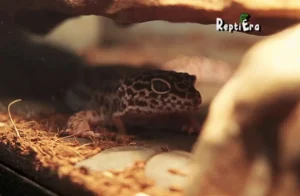
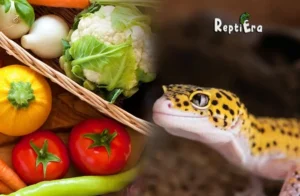
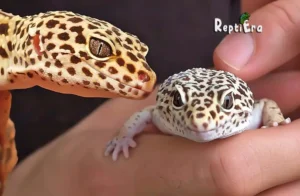
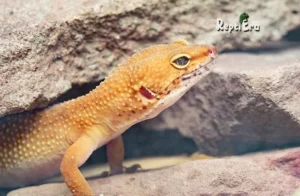
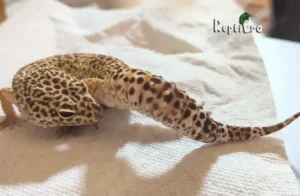
Your article helped me a lot, is there any more related content? Thanks!